Subtotal: £4.84
10 X 90Ml Bags (900Ml) Live Marine Copepods in Water Aquatic Food, Stunning Live Food for Betta Companions, Boost Their Vitality and Well-Being in Your Aquarium
£20.49 Original price was: £20.49.£17.42Current price is: £17.42.
Welcome these beautiful creatures into your aquarium with our 10 X 90Ml Bags of Live Marine Copepods. Ideal for Betta fish, this nutritious aquatic food provides essential fish nutrition, ensuring your aquatic companions thrive in a vibrant and healthy environment.
1000 in stock
Species Introduction
Live marine copepods are tiny crustaceans that play a vital role in the aquatic food web. They are a natural food source for many fish species, including Betta fish, and are known for their high nutritional value. Originating from various marine environments, copepods thrive in both saltwater and freshwater habitats. These small organisms are typically found in the planktonic zone of oceans and seas, where they feed on phytoplankton and detritus. The copepod species we provide are carefully harvested from pristine waters to ensure they are free from pollutants and diseases, making them an excellent choice for enriching your fish’s diet.
Nutritional Analysis
| Nutrient | Content | Benefit |
|---|---|---|
| Protein | High Quality | Growth & muscle development |
| Vitamins | Enriched Formula | Immune system support |
| Color Enhancers | Natural Carotenoids | Vibrant coloration |
| Probiotics | Digestive Support | Healthy gut flora |
Care Requirements Dashboard
✓ Care Level: Easy
Tank Size: 10 gallons minimum
Water Parameters: pH 7.0-8.5, Temperature 72-78°F, Hardness 5-15 dGH
Natural Behavior & Temperament
Copepods exhibit fascinating behavior in their natural environment. They are generally free-swimming and are known for their erratic swimming patterns, which help them evade predators. This behavior makes them an appealing food source for fish, as they mimic the natural prey that many species would hunt in the wild. Copepods are also social creatures, often found in large swarms, which can be beneficial for fish that prefer to hunt in groups. Their presence in an aquarium can stimulate natural hunting instincts in fish, promoting healthy activity levels and reducing stress.
Tank Setup Guide
Setting up an ideal environment for live marine copepods involves creating a habitat that mimics their natural conditions. A tank size of at least 10 gallons is recommended to provide ample swimming space and to maintain stable water parameters. Use a fine substrate to allow for natural foraging behaviors, and incorporate live plants to enhance the aesthetic and provide hiding spots. Decorations should be chosen with care, ensuring they are non-toxic and do not have sharp edges that could harm the copepods. Additionally, maintaining a gentle water flow will help simulate their natural habitat while preventing them from being swept away.
Water Quality Management
Water quality is crucial for the health of your live marine copepods. The ideal pH range is between 7.0 and 8.5, with a temperature maintained between 72°F and 78°F. Regular testing of water parameters is essential to ensure they remain stable, as fluctuations can stress copepods and affect their reproduction rates. Hardness should be kept between 5 and 15 dGH to mimic their natural environment. Regular water changes of about 10-20% weekly can help maintain optimal water quality, removing waste products and replenishing essential minerals.
Feeding & Nutrition
Feeding live marine copepods is straightforward, as they thrive on a diet of phytoplankton and other microscopic organisms. When providing copepods to your fish, it’s essential to ensure they are well-fed prior to introduction, as this maximizes their nutritional value. A feeding schedule of 2-3 times per week is typically sufficient, depending on the size and number of fish in your aquarium. Betta fish, in particular, benefit from the high protein content found in copepods, which can enhance their coloration and overall vitality. It’s advisable to observe your fish’s feeding behavior and adjust the quantity accordingly to prevent overfeeding.
Compatibility Guide
Live marine copepods are compatible with a wide variety of fish species, making them an excellent addition to community tanks. They are particularly beneficial for Betta fish, as their natural hunting instincts are stimulated when they chase after these small organisms. However, it’s crucial to avoid keeping them with overly aggressive fish that may outcompete them for food or consume them. Ideal tank mates include peaceful species such as tetras, guppies, and other small community fish. Always monitor interactions to ensure a harmonious environment for all aquatic companions.
Health & Wellness
Maintaining the health of live marine copepods is essential for ensuring they remain a nutritious food source for your fish. Common issues include overpopulation, which can lead to competition for resources, and poor water quality, which can stress copepods and lead to die-offs. Regular monitoring of water parameters and implementing a consistent feeding schedule can help mitigate these risks. Signs of unhealthy copepods may include lethargic behavior or a noticeable decline in their population. If these signs are observed, immediate action should be taken to improve water quality and feeding practices.
Breeding Information
Breeding live marine copepods in your aquarium can be a rewarding experience. Copepods reproduce rapidly under optimal conditions, with females capable of producing multiple eggs daily. To encourage breeding, ensure that water quality is maintained at ideal levels, with stable temperature and pH. Providing ample food sources, such as phytoplankton, will also promote healthy reproduction. Once the copepods have spawned, the young will hatch within a few days, and it’s crucial to provide them with sufficient food to support their growth. Monitoring the population will help maintain a sustainable balance within your aquarium.
Acclimation Process
Introducing live marine copepods to your aquarium requires a careful acclimation process to minimize stress. Begin by floating the sealed bag in the aquarium for about 15-20 minutes to equalize the temperature. Next, gradually introduce small amounts of aquarium water into the bag every 5 minutes for about an hour. This process helps copepods adjust to the water parameters of their new environment. Once acclimated, gently release them into the tank, avoiding any excess water from the bag to prevent introducing contaminants. Monitoring their behavior in the new environment will help ensure a successful transition.
Long-term Care
Long-term care of live marine copepods involves regular monitoring of water quality, feeding practices, and population management. It’s essential to maintain a stable environment, as fluctuations can lead to stress and population declines. Regular water changes and testing will help keep conditions optimal. Additionally, observe the copepods’ behavior and population growth to ensure they are thriving. If overpopulation occurs, consider introducing more fish to help maintain balance or reducing feeding frequency to control their numbers. Proper long-term care will ensure that your copepods remain a healthy food source for your fish.
Natural Habitat Recreation
Recreating the natural habitat of live marine copepods in your aquarium can enhance their well-being and encourage natural behaviors. Incorporate live plants, such as Java moss or other aquatic flora, to provide hiding spots and surfaces for copepods to graze on. Additionally, consider adding a small sponge filter to maintain gentle water movement, mimicking the currents found in their natural environments. Avoid using harsh chemicals or medications that could harm copepods, and instead focus on natural methods for maintaining water quality. A well-planned aquascape will not only benefit the copepods but also create a visually appealing environment for your fish.
Seasonal Care Adjustments
As seasons change, so too can the conditions within your aquarium. During warmer months, ensure that the water temperature remains stable, as higher temperatures can lead to reduced oxygen levels and stress for copepods. Conversely, in colder months, consider using a heater to maintain the ideal temperature range. Additionally, adjust feeding practices based on the activity levels of your fish and copepods, as they may require more food during periods of increased metabolism. Regularly check water parameters to ensure they remain within the optimal range throughout the year.
Expert Tips
For those looking to optimize the care of live marine copepods, consider implementing a few expert tips. First, ensure that your copepods have access to a diverse diet, including various types of phytoplankton, to maximize their nutritional value for your fish. Second, consider using a small mesh net to harvest copepods for feeding, as this minimizes stress and allows you to control the quantity provided to your fish. Lastly, always keep a close eye on water quality and copepod behavior to catch any potential issues early. By following these tips, you can create a thriving environment for both your copepods and fish friends.
Troubleshooting
If you encounter issues with your live marine copepods, such as a sudden decline in population or lethargic behavior, there are several troubleshooting steps to consider. First, test your water parameters to identify any fluctuations in pH, temperature, or hardness that may be affecting their health. If water quality is poor, perform a partial water change and ensure that your filtration system is functioning correctly. Additionally, review your feeding practices to ensure that copepods are receiving adequate nutrition without overfeeding. By addressing these factors, you can help restore a healthy environment for your copepods.
Scientific Background
Live marine copepods belong to the subclass Copepoda, which encompasses a diverse group of small crustaceans found in various aquatic environments. They play a crucial role in the marine food web, serving as a primary food source for many fish and invertebrates. Research has shown that copepods are rich in essential fatty acids, proteins, and vitamins, making them an excellent dietary supplement for fish. Conservation efforts are vital to preserving natural copepod populations, as they are integral to maintaining healthy aquatic ecosystems. Understanding the scientific background of copepods can enhance your appreciation for these remarkable organisms.
Advanced Care Techniques
For aquarists looking to take their care of live marine copepods to the next level, advanced techniques can be employed. Consider creating a dedicated copepod culture tank to ensure a continuous supply for your fish. This involves maintaining optimal water conditions and providing a consistent food source. Additionally, implementing a light cycle that mimics natural day and night patterns can promote healthy growth and reproduction. Regularly harvesting copepods from the culture tank will help control their population and ensure that your fish always have access to fresh, nutritious food. By investing time and care into your copepod culture, you can enhance the health and vitality of your aquatic companions.
Optimal Feeding Schedule
8:00 AM
Main portion of daily nutrition
6:00 PM
Smaller portion to maintain energy
Feeding Tips
- Feed only what fish can consume in 2-3 minutes
- Remove uneaten food to maintain water quality
- Adjust quantity based on fish activity and temperature
- Fast fish one day per week for digestive health
Frequently Asked Questions
Q: What tank size is required for marine copepods?
Marine copepods are versatile and can thrive in various tank sizes. However, a minimum of 20 litres is recommended for optimal growth and reproduction. Larger tanks provide more stable water parameters and allow for better population management. Copepods require ample space to swim and reproduce; therefore, ensure that your tank is well-planted or has sufficient hiding spots to mimic their natural habitat. Regular water changes and maintenance are essential to keep the environment healthy for these vital organisms.
✓ Expert Tip
Consider adding a refugium to your system, which can serve as a breeding ground for copepods, ensuring a continuous supply for your fish friends.
Q: How often should I feed my fish copepods?
Feeding frequency can vary based on the species of fish in your aquarium. Generally, it is advisable to feed copepods at least once a day, ensuring that your fish receive enough nutrition without overfeeding. Observe your fish’s behaviour; they should eat the copepods within a few minutes. If any food remains after this period, reduce the quantity in subsequent feedings. Remember, copepods are excellent for enhancing the dietary variety of your fish, especially during breeding periods.
✓ Expert Tip
Integrate copepods into your feeding regimen alongside dry foods to provide a balanced diet for your aquatic companions.
Q: How should I properly store live copepods?
Live copepods should be stored in a cool, dark place to maintain their vitality. Ideally, they should be kept at a temperature between 18°C and 22°C. Use a container with aeration to ensure oxygen supply, and avoid direct sunlight, which can elevate temperatures and harm them. If you are not using them immediately, consider transferring them to a suitable aquarium environment where they can thrive until needed for feeding.
✓ Expert Tip
Regularly check the water quality in your storage container, as poor conditions can lead to a rapid decline in copepod health.
Q: Will feeding copepods affect my water quality?
Feeding copepods can positively impact your water quality, as they contribute to a balanced ecosystem within your aquarium. However, overfeeding can lead to uneaten food decomposing, which may deteriorate water quality. It is crucial to monitor feeding amounts and adjust accordingly. Regular water testing is recommended to ensure parameters remain stable. Maintaining a good filtration system will further assist in managing waste and maintaining healthy water conditions.
✓ Expert Tip
Incorporate regular water changes into your routine to help mitigate any potential water quality issues.
Q: Are copepods suitable for all fish species?
Copepods are highly nutritious and generally suitable for a wide range of fish species, including small reef fish and juvenile fish. However, larger fish may not find them as appealing. It is essential to consider the dietary needs of your fish friends when introducing copepods into their diet. Observe how they react to this food source and adjust accordingly. Many fish benefit from the added protein and omega fatty acids that copepods provide.
✓ Expert Tip
Research the specific dietary habits of your fish to ensure copepods complement their nutritional needs effectively.
Q: How do I transition my fish to copepods?
Transitioning fish to copepods should be done gradually to avoid digestive issues. Start by mixing a small quantity of copepods with their usual food, allowing them to become accustomed to the new food source. Over several days, gradually increase the amount of copepods while decreasing the other food. Monitor your fish’s response throughout this process. If they show interest and consume the copepods, continue with the transition until they are fully adapted.
✓ Expert Tip
This gradual approach helps reduce stress and encourages healthy eating habits in your fish.
Q: Can copepods enhance the colouration of my fish?
Yes, copepods can contribute to enhancing the colouration of your fish friends. The rich nutritional profile of copepods, particularly their high levels of omega fatty acids and carotenoids, supports vibrant colours in fish. Regularly incorporating copepods into their diet can lead to improved pigmentation and overall health. This is particularly evident in species known for their colourful displays, such as clownfish and tangs.
✓ Expert Tip
Consider supplementing with other colour-enhancing foods for a comprehensive approach to maintaining your fish’s vibrant appearance.
Q: What are the signs of healthy copepods?
Healthy copepods are lively and exhibit active swimming behaviours. They should be seen darting around the tank or container rather than remaining stationary or floating listlessly. Additionally, a healthy population will reproduce consistently, indicating a stable environment. Regularly check for signs of decline, such as reduced movement or a decrease in numbers, which may suggest issues with water quality or temperature.
✓ Expert Tip
Maintaining optimal water conditions is crucial for the health of copepods; regular testing and adjustments will support their vitality.
Q: What temperature should I maintain for copepods?
Copepods thrive best in temperatures ranging from 20°C to 24°C. Maintaining this temperature range is essential for their growth and reproduction. Sudden fluctuations can stress copepods and hinder their population. Use a reliable heater and thermometer to monitor the temperature consistently, ensuring it remains within the ideal range. Regular checks will help prevent temperature-related issues.
✓ Expert Tip
Consider using a temperature controller for precision in maintaining stable conditions.
Q: How do I recognise stress in copepods?
Stress in copepods can be indicated by reduced activity levels and erratic swimming patterns. Healthy copepods are typically active and should not be seen floating or congregating at the water’s surface. If you observe a significant decrease in their movement or an increase in mortality rates, it may signal environmental stressors such as poor water quality, incorrect temperature, or lack of food. Regular monitoring of these factors is crucial to maintaining a healthy copepod population.
✓ Expert Tip
Make adjustments promptly if you notice any signs of stress to support their recovery.
Q: How can I prevent common diseases in copepods?
Preventing diseases in copepods begins with maintaining optimal water quality and stable conditions. Regular water changes, proper filtration, and monitoring of parameters such as pH, ammonia, and nitrite levels are essential. Additionally, avoid overcrowding and ensure adequate food supply to reduce stress. If you notice any signs of disease, such as lethargy or abnormal swimming, take immediate action to rectify the environmental conditions.
✓ Expert Tip
Consider introducing probiotics into the tank to enhance the overall health of your copepod population.


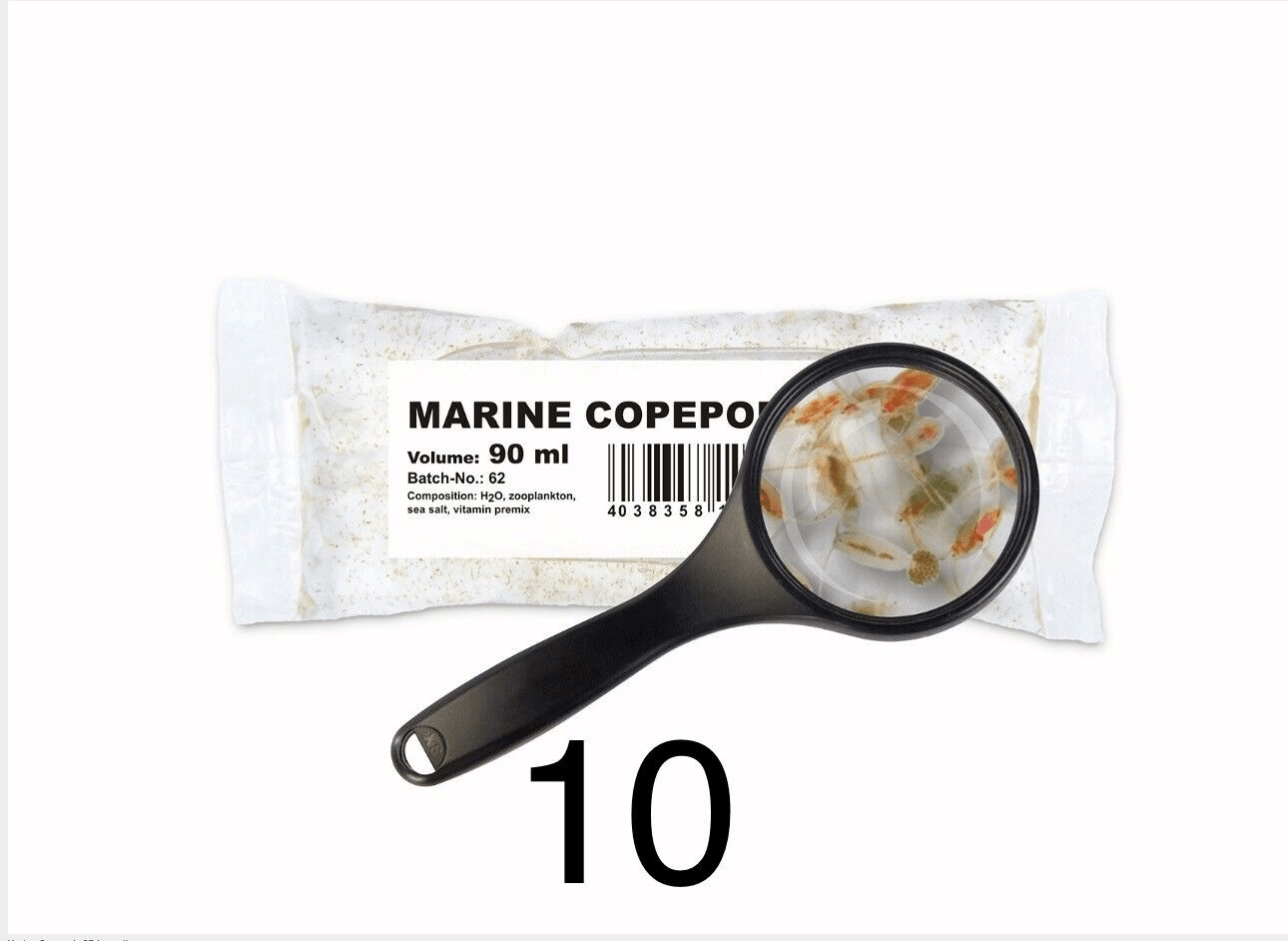

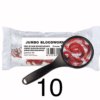

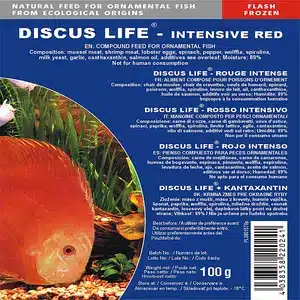

![Tropical Insect Menu Flakes 100ml 20g Pokarm dla miesozernych ryb [63239] 1200](https://aquatropics.co.uk/wp-content/uploads/2025/06/Tropical-Insect-Menu-Flakes-100ml-20g-Pokarm-dla-miesozernych-ryb_63239_1200-1-450x450.jpg)
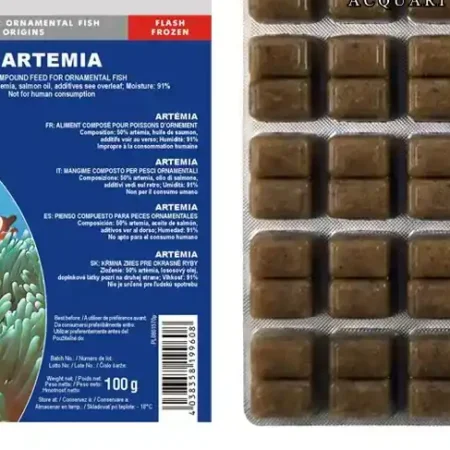

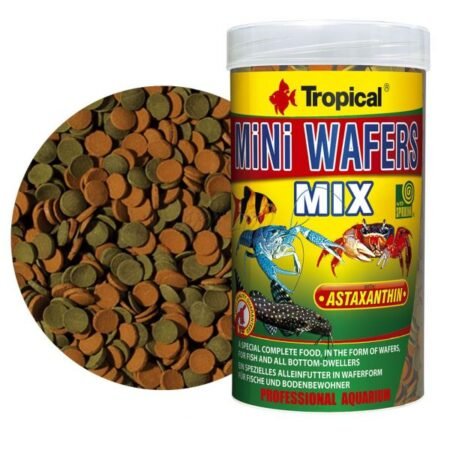

Emily Carter (verified owner) –
As a caring fish parent, I always strive to provide the best nutrition for my betta fish. After using the 10 X 90Ml Bags of live marine copepods for about two weeks, I can confidently say this is some of the best fish food I’ve ever introduced to my aquarium! My betta, named Bubbles, has shown incredible enthusiasm during feeding time—he practically dances as I drop the copepods in.
The quality of these copepods is evident; they are lively and nutritious, making them a perfect treat for my little guy. Compared to other fish foods I’ve tried, the live copepods seem to enhance his colors and overall vitality. I love that they are packed in water, ensuring they stay fresh right up until I’m ready to use them.
Shipping was prompt, and everything arrived as described, though I did notice a few bags were slightly leaky, which wasn’t a huge issue for me. I highly recommend these to anyone looking to give their fish a nutritious boost. They are especially perfect for bettas, but I believe other small fish would benefit too. If you want to see your aquatic friends thrive, don’t hesitate to give these a try!